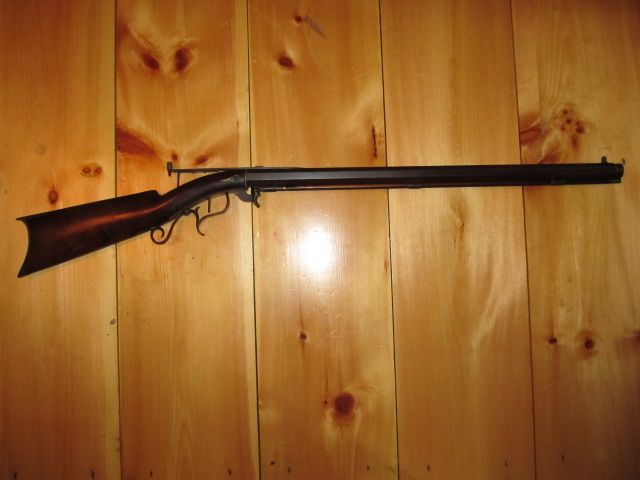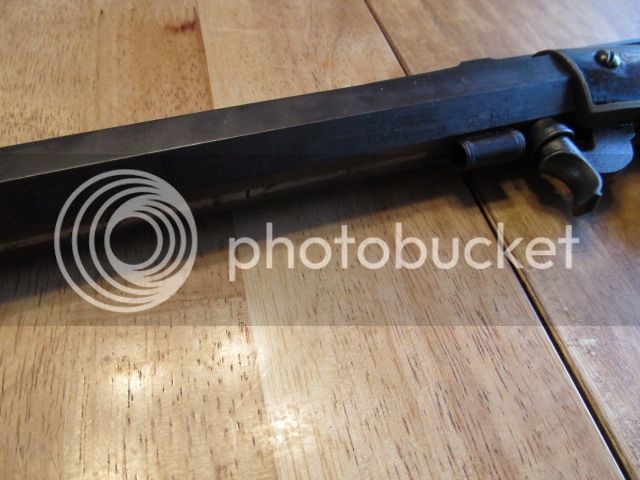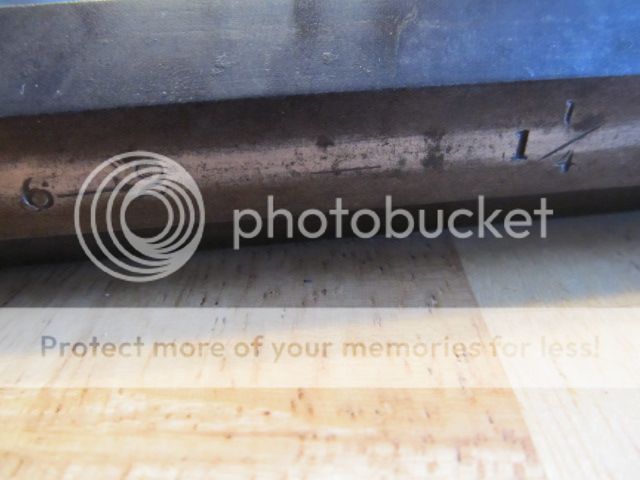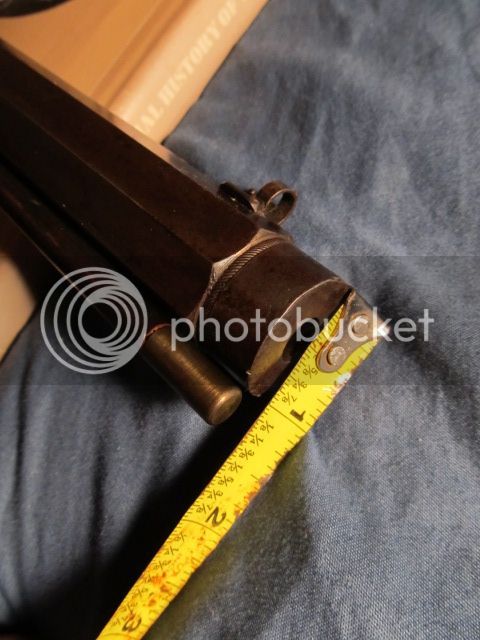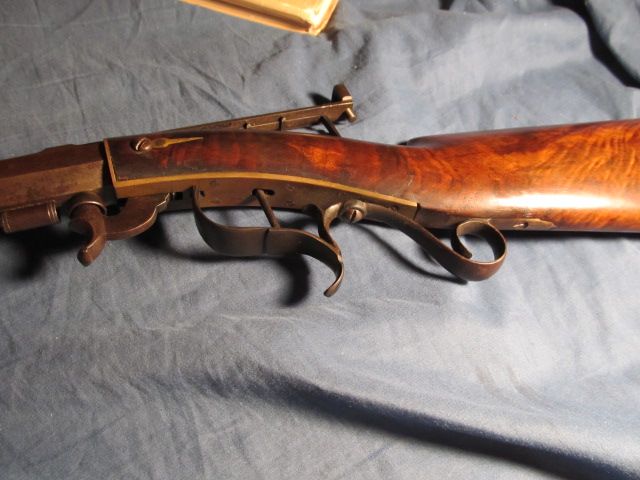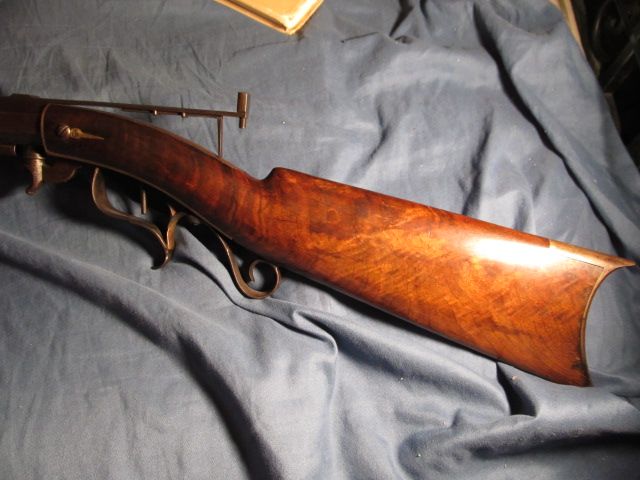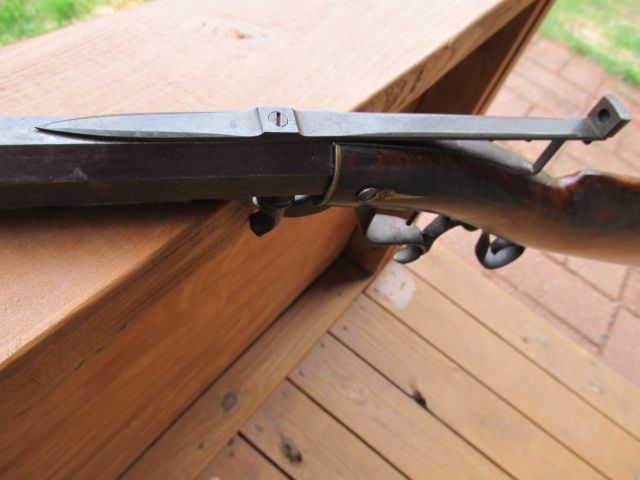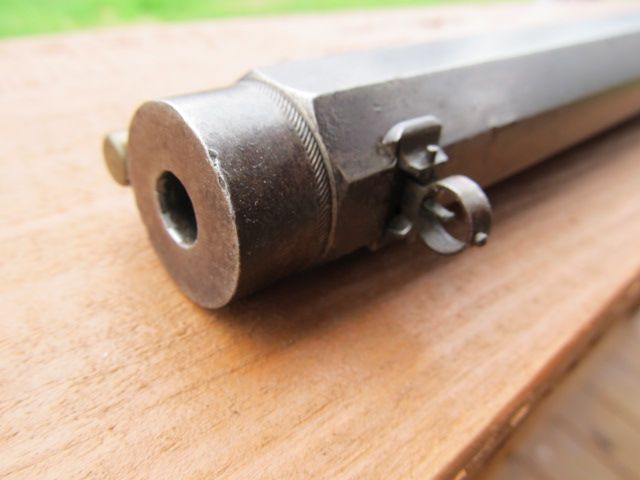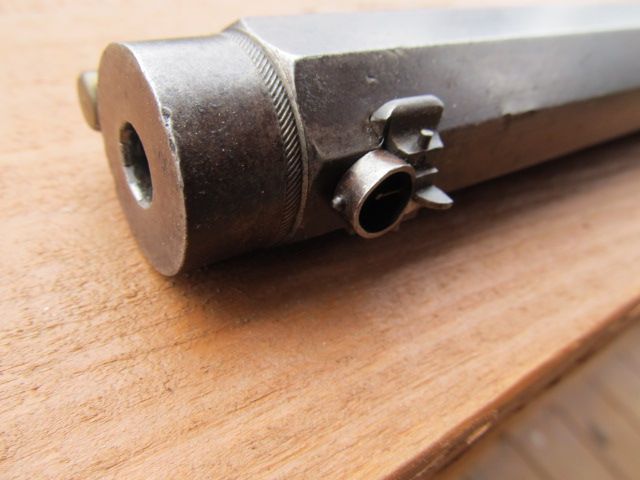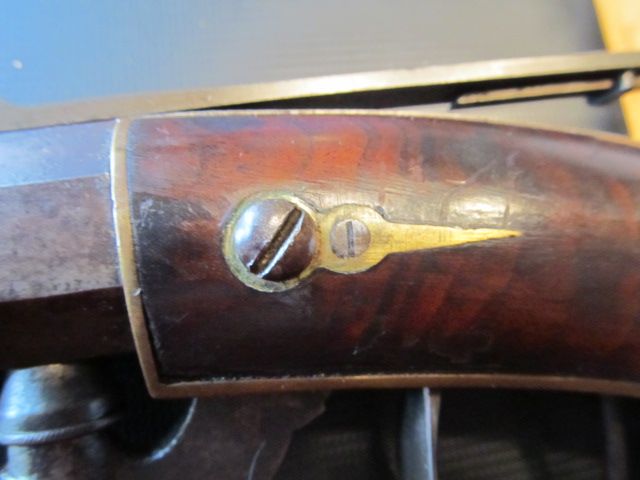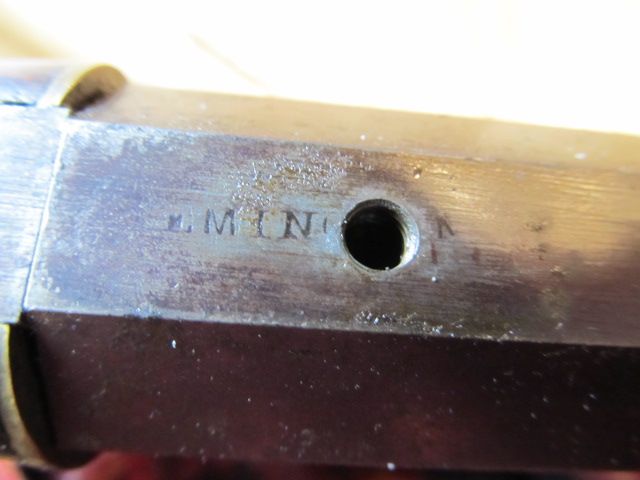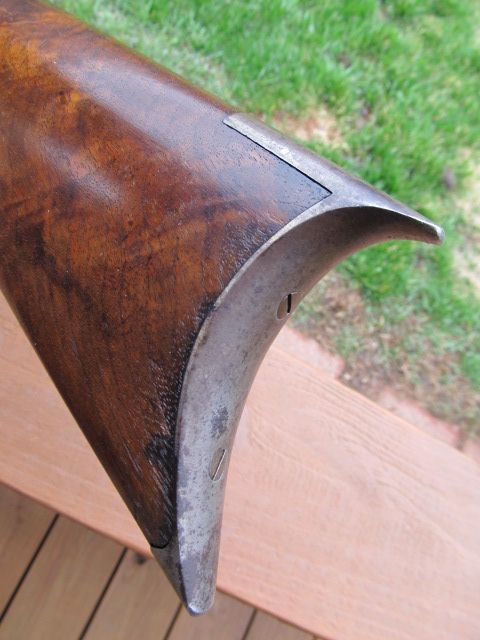Sorry if I caused some confusion: I should have referred back to the marking itself - '6-2'. And this, too, is speculation on my part (but not a wild guess). Is the rifling obviously gaining pitch?
Barrel makers often mark their products with specific technical information, both for their own records and for the owner of the piece: knowing what the final pitch was, in a gain twist barrel, would help the user to determine what weight bullet would likely work best. Harry Pope, among others, marked his barrels with such information.
The muzzle of your rifle is turned round not for a false muzzle, which would have had pins in the false muzzle itself and corresponding holes in the muzzle, but for a straight starter, used to properly seat the picket bullet and cloth patch; as was necessary to insure that the picket, which had little or no parallel body, was centered properly in the bore and not 'cocked' with the long axis of the bullet not coinciding with the centerline of the bore.
Yours appears to be a really nice rifle, and, I hope, in shootable shape.
FWIW, you should be able to measure the barrel across the flats with a simple caliper, or even with a ruler by eyeball.
mhb - Mike
